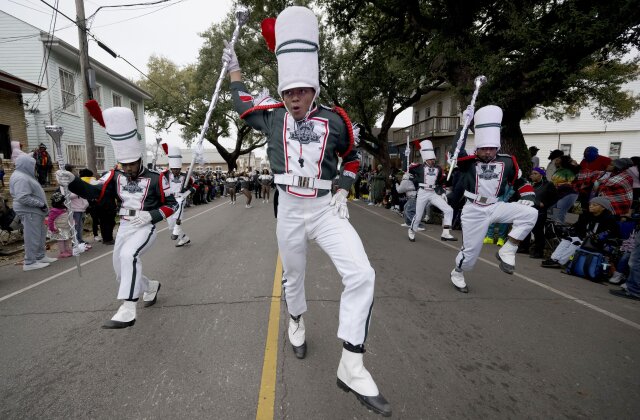[ad_1]
DALLAS (AP) — After World War II, U.S. Army art experts set out to find and return millions of works stolen by the Nazis. Is known The Monuments MenThey included Mary Regan Quesenberry, who traveled from her base in Berlin to investigate acts of theft, follow up on looting cases, and investigate suspicious art dealers.
Decades later, Quesenberry and other female members are gaining recognition.
The Dallas-based foundation honoring the group updated its name in recent years to recognize their contributions, highlighting their work a new performance in a national museum, and is set to publish for the first time in English a memoir in which a woman describes spying on the Nazis while working in a Paris museum.
Anna Bottinelli, president of the Monuments Men and Women Foundation, said, “The Monuments Men were not all men.”
The Memorials, Fine Arts and Archives Section of the Allied Armies consisted of 27 women and approximately 320 men during and immediately after World War II. The Army recently revived the concept, with the first new class of commissary officers graduating in 2022.
Photos you should see

When battles broke out during World War II, it was these people who protected the art and architectural treasures. When attention turned to restoration after the war, women came into the picture.
This is a pivot that the foundation has also made since Dallas-based writer Robert Edsel It was founded about 20 years ago, focusing on the war years. Edsel made monument officials a household name by writing books including “The Monuments Men,” which was made into a 2014 film starring George Clooney and Harry Potter. Matt Damon,
Bottinelli said, “As our mission evolved and as our work evolved, it became really natural to focus more on post-war efforts and women as a result.”
A permanent exhibition on monuments authorities which is part of a New contribution to the National World War II Museum Opened in New Orleans in November. The Memorial Men’s and Women’s Gallery includes a recreation of a salt mine where memorial officials found the stolen art.
The exhibit also features the story of Quesenberry, who joined the Women’s Army Corps when America entered the war. After the Allied victory in Europe, he learned that the army was looking for art experts. Quesenberry, who had a master’s degree in art history, jumped at the opportunity.
When she arrived in Berlin, she was greeted by Lieutenant Colonel Mason Hammond, a classics professor at Harvard University, whom she had known during her studies at Radcliffe College, which later merged with Harvard.
“He opened the door … recognized her and put his arms around her and said, ‘Mary, thank God you’re here,'” Edsel said.
She returned to the United States in 1948 as a major.
Quesenberry’s friend, Ken Scott, said that she described her time as a memorial officer as “the most exciting time of her life.” She said she was “delighted” when the Edsel made the trip. Massachusetts He was interviewed in 2010, a few years before his death at the age of 94.
Edsel said, “She was an absolute pistol, as they used to say, just full of stories.”
Ensuring that women received the recognition they deserved was important to Quesenberry. “She was very strong and vocal about it,” Scott said.
This fall, the foundation will publish Rose Welland’s memoir. In “The Art Front”, originally published in French in 1961, Walland, a French art expert turned monuments official, writes about secretly tracking looting outside a Paris museum by the Nazis. After carrying out the operation the stolen works were sent to the place where she worked. ,
Bottinelli said, “It was as a result of his notes and his espionage that when the Allies entered Paris in 1944 they were able to find out where the art had been taken and who it belonged to.”
Welland, who inspired the role played by Cate Blanchett in the film “The Monuments Men,” died in 1980 at the age of 81.
Edsel said the last World War II-era memorial officer was a woman. After operations ended around 1950, Ardelia Hall took on the mission from the State Department in the early 1960s, keeping an inventory of the still-missing works and urging museums and art dealers to remain vigilant. One woman, Captain Edith Standen, also thought about recording the names of all her fellow memorial officers in Germany after the war, he said.
The Army’s first class of new monuments officers, called Heritage and Conservation Officers, are slated to graduate in summer 2022.
They included Captain Jessica Wagner, who has worked in museums across the US. He said that being part of a new version of the group he studied while getting his master’s degree “feels a little surreal.”
“You always ask yourself the question: Would I be willing to go and do this? I think the answer is yes,” Wagner said.
Video journalist Kendrea LaFleur contributed to this report.
Copyright 2024 The associated Press, All rights reserved. This material may not be published, broadcast, rewritten, or redistributed.
[ad_2]
Source link
